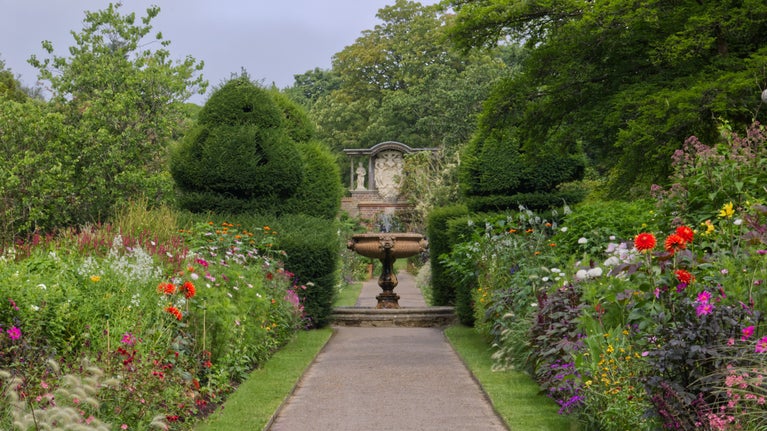
Gardens and landscapes
Find out more about the historical landscapes that the talented garden teams work hard to conserve at the places you love to visit.


Many of the gardens cared for by the National Trust have historical connections with Victorian plant collectors. Learn more about their impact on UK plant species, the importance of responsible collecting and discover some of the gardens they shaped.
The UK’s gardens and parklands are created by the conservation and cultivation of thousands of plants which originate from across the world. Today, over 75 per cent of the plants in our gardens are not native to this country.
The UK plant palette of just some 1,500 plants has been expanded by the collection and introduction of some of the 391,000 plant species currently known to science. In addition, it is estimated there are over 420,000 cultivated plants with an additional 4,000 being brought to market each year.
This vast range of plants has influenced over 400 years of garden design history, evident in the gardens we care for. The cultivation and display of plants from different countries and climates has prompted innovation in glasshouses and garden building design and the continued increase in horticultural skills. In the UK the amazing plant world continues to shape gardens and our love of gardening.
Many of the places we care for have historical connections with men and women passionate about plant collecting, cultivation and display. Some as patrons and investors, others as collectors, researchers and plant breeders.
The European plant collectors were highly skilled botanists whose work contributed greatly to our knowledge of plant diversity and provided many plants that were at the heart of plant breeding in the UK.
However, many plants were collected during the colonial period for commercial gain and to support the expansion of the British Empire. These plants had no traceable permission from or compensation to the countries of origin and their communities.

Through history gardeners and scientists have introduced plants to the UK, that have been able to adapt and flourish in our climate beyond our garden boundaries, competing with our native flora.
Over 60 per cent of invasive plants in the UK have escaped from gardens. Perhaps one of the best known is Japanese Knotweed, originally introduced as a garden plant in Victorian times.
Plant collecting has also had an impact on the habitats of host countries where over collecting and damage to neighbouring plants has caused habitat loss and destruction. The practice of plant collecting has not always taken into account the impact on local habitats, people or wildlife. Today, it is very different.
Plant collecting continues to enhance the plant collections looked after by the National Trust and strengthen genetic diversity.
As we consider the impacts of climate change on the landscapes and gardens in our care, the availability of plants from climates and growing conditions different to the UK will help inform species selection and future plant breeding. This will enable future generations to enjoy the gardens and parklands in our care.
Plant collecting today is guided by worldwide conservation legislation and licensing. This ensures fair and equitable trading and compensation to host countries for plants, plant products and plant knowledge.
Through interpretation and communication, the National Trust is committed to fully exploring and sharing the histories of the places we care for. This includes understanding the historical context of gardens and their plants.

From the giant redwoods at Killerton in Devon, to the plant collections of Mount Stewart in Northern Ireland, these are some of the best examples of gardens in our care, shaped by Victorian plant collectors.

Find out more about the historical landscapes that the talented garden teams work hard to conserve at the places you love to visit.
Wander through our collections and gardens to learn the high-society origins of the ferns, orchids and pelargoniums in your home.

Find out more about the picturesque aesthetic style and how it became a fashionable choice for wealthy estates in the 18th century. Discover more about the people who influenced the movement.

The history of the English landscape garden is infused with political meaning. Learn the history and political stories behind this garden style characterised by structured informality.

Uncover the horticultural history of the dahlia, from its origins in Central America to becoming an inspiration for legendary crime writer Agatha Christie.

Tulips have been a popular flower for centuries. Find out where they came from, how they inspired the 'tulipmania' craze and learn about the different varieties you can still spot today.
